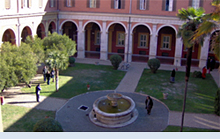 |
European Planetary Science Congress 2010
Angelicum Centre – Pontifical University of Saint Thomas Aquinas
19 – 24 September 2010, Rome, Italy |
 |
|
OEA2 Extremophilic microorganisms on and below planetary surfaces |
| Convener: Helga Stan-Lotter |
|
Oral Program
/ Fri, 24 Sep, 13:30–14:30
/ Room Lecture Room 2
|
Viable microorganisms - including bacteria, archaea and fungi - were found in recent years in mineral-associated environments, such as dry rocks, evaporites, deep drillings, caves and sediments. Such near-surface or subsurface environments could be be analogous to conditions on Mars and other planets. Many as yet unanswered questions have been raised in connection with this new research: are microorganisms entrapped in deposits, sediments, etc. as ancient as the geological samples, from which they were isolated, would suggest? How do these organisms survive? Which mechanisms allow them to endure prolonged states of starvation and/or desiccation? Are any specific dormant survival forms other than spores produced? Are subterranean prokaryotes and fungi able to divide almost infinitely slowly - as was proposed - which would imply maintenance of minimal metabolic activity? Answers to these questions will impact the search for extraterrestrial life. Scientists from various disciplines are invited to address these issues. Contributions on highly sensitive detection methods for microorganisms from surfaces or below surfaces are especially welcome.

